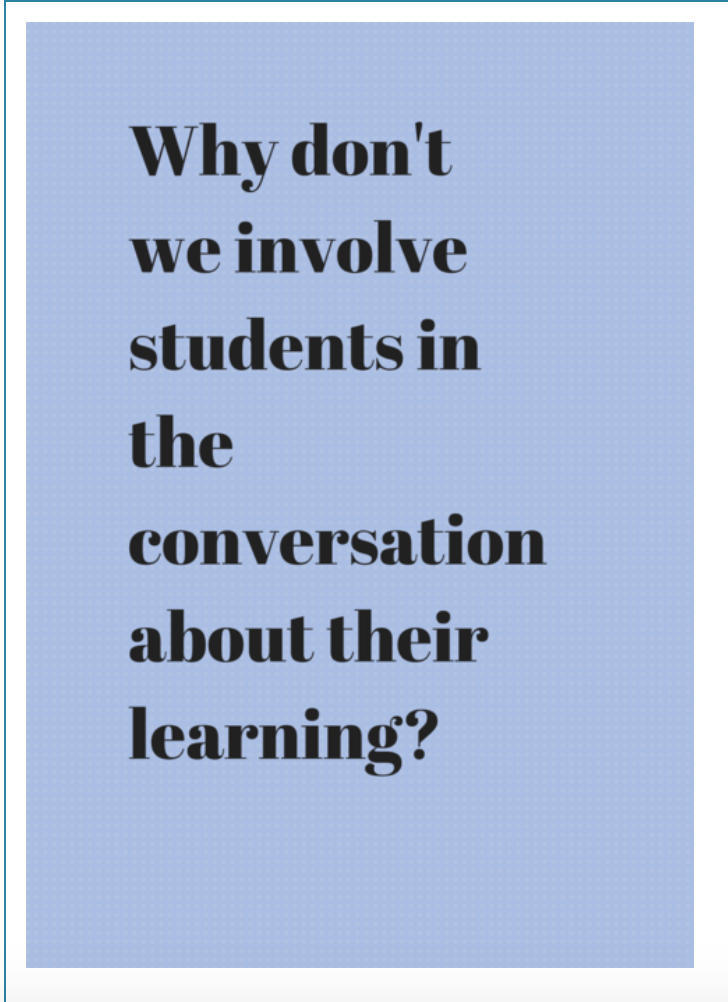7 Tips for Successful Portfolio Conferences
- Starr Sackstein

- May 12, 2020
- 4 min read

Long lines at the door of the classroom or appointments made to sit across a desk.
Knee to knee, parents sit with teachers discussing the progress or lack of achievement while the classroom remains empty.
Students are sent home to ensure quiet time for teachers and parents.
But why?
For too long communication between home and school has been done with the absence of the most important participant, the student.
If we truly seek to make these communications meaningful, we need to include the student in the dialogue, even let them lead the discussion.
As more and more districts are becoming transparent with their grade books, putting everything online, there is no longer a need to only go through the grade book during these bi-annual face to face opportunities; the time can be spent more effectively and meaningfully.
In my school, we've moved away from traditional parent/teacher conferences in favor of student-led portfolio conferences.
Parents and students are invited in together, where they sit knee to knee discussing achievement while looking at student work. The teacher doesn't participate in the conversation at all. Many times the students aren't even in our classes, so we can't participate even if want to.
Understanding this is a complete paradigm shift from the old standard way, here are a few tips and benefits for changing the tradition.
Develop a portfolio culture where student learning is a growth process. Products selected for portfolios shouldn't just be graded tests, but rather assignments and projects that show deep growth and progress, progress students can articulate through reflection and discussion. All classes should collaborate to help students see how learning connects to each other and how skills overlap even if they are called different things in different places.
Allow students to make choices about what artifacts are collected and shown. Empower them to be responsible for maintaining their work and teach them how to select something meaningful. Students should be proud of what they pick and should understand why it belongs in the discussion. When students have ownership of their learning, they are more engaged and accountable.
Deflect parent questions back to the student. Students need to be accountable for their learning or lack thereof it. What are they and aren't they doing to be successful? How can they show mastery? What challenges are they facing? Allow students to practice presenting in order to be natural in their discussion of learning. Not too rehearsed, but confident, students should be able to field questions about the individual skills and content they have acquired.
Teachers should listen to the conversations and see where they can help add enrichment in their own classes. If students only have a cursory understanding of mastery, perhaps more time needs to be spent talking about what it looks like and how they can achieve it. This can be a great opportunity to adjust learning appropriately in our individual learning spaces. It can also be a great way to see how well we gel as a school community.
Online digital portfolios are another way to really be transparent in a school. If parents have access to student learning all the time, communication will be improved all the time. Technology makes this kind of communication simple and there are many different solutions out there. Schools just need to determine which one would work best for their environment. With this added transparency, students and parents will never be surprised by what is happening at school.
Reflection is at the center of discussion. When kids complete assignments they should be asked to reflect against the standards and explain what they have learned. This is great preparation for discussions about their learning later.
House student work in one place (maybe in the cloud) where they can see their growth over time. Not just in one school year, but over their time in one school. Then for lower grades, this portfolio or blog can come with the student to future teachers and give a very good insight on what has been taught AND learned so far. We conclude high school with an exit portfolio presentation where the students are expected to speak to a panel about their career or college readiness based on their learning with evidence. The metacognitive awareness that is developed over time helps cultivate future success as students can truly articulate what they know and can do.
Portfolio conferences can really change the way school cultures respond to learning. The traditional model keeps the adults in charge of everything and perhaps at one time that was appropriate. In the 21st century, however, learning is no longer up to the teacher alone, students are active participants and collaborators, so why not involve them in the communication about learning too?
Recently I did a Facebook Coaching on portfolios, which may add some more context to the idea. Check it out:
What trepidations would you have about shifting to portfolio conferences? How can this model better grow student achievement? Please share your thoughts.
This post originally ran on my Education Week Teacher blog in March of 2015







![Pioneering Progressive Education [Podcast]](https://static.wixstatic.com/media/f13d2d_a6be13eac0c049d9a6e02dc01e32ced3~mv2.png/v1/fill/w_980,h_349,al_c,q_85,usm_0.66_1.00_0.01,enc_avif,quality_auto/f13d2d_a6be13eac0c049d9a6e02dc01e32ced3~mv2.png)
Comments